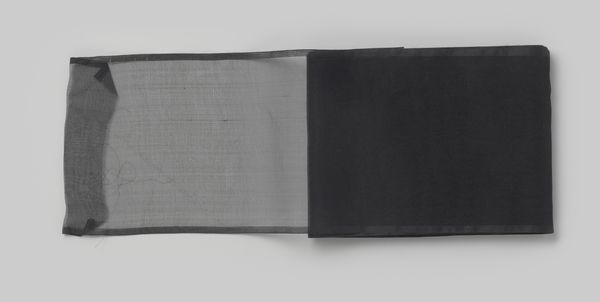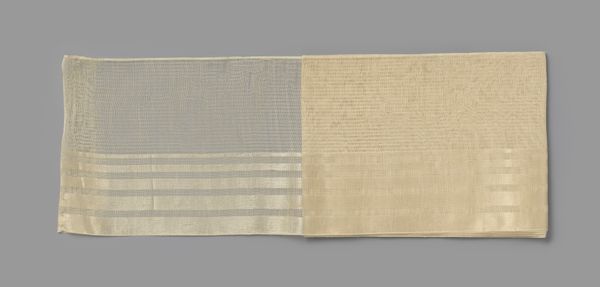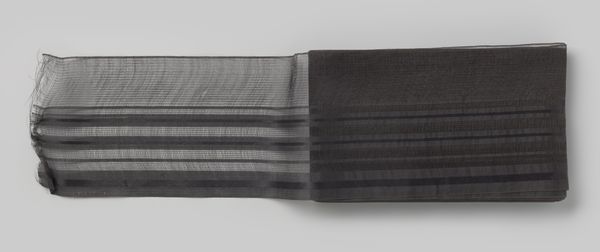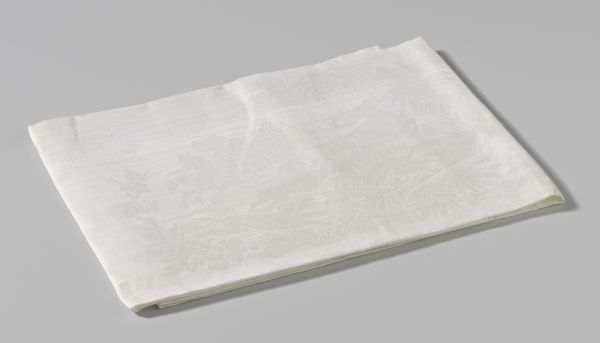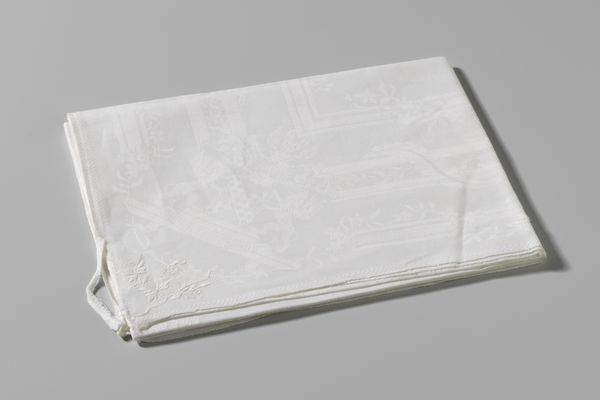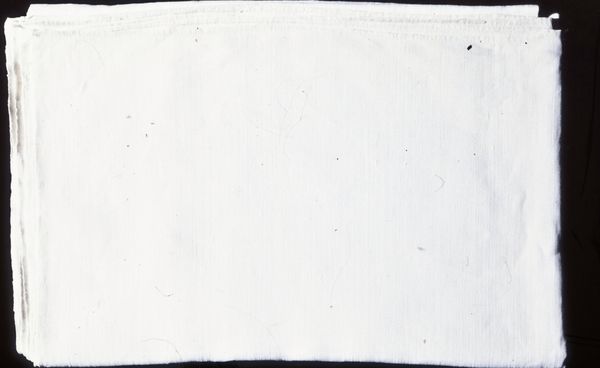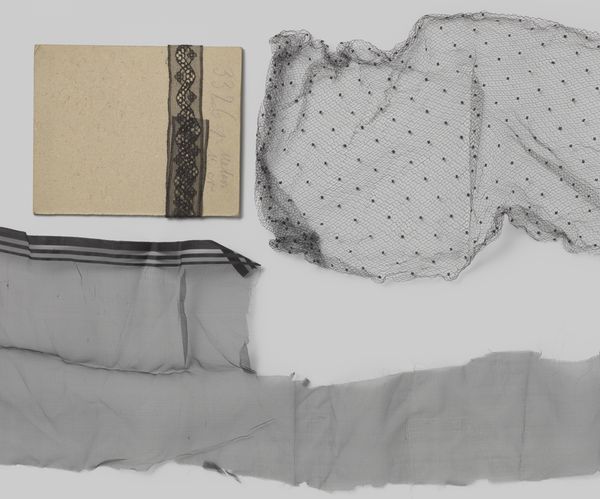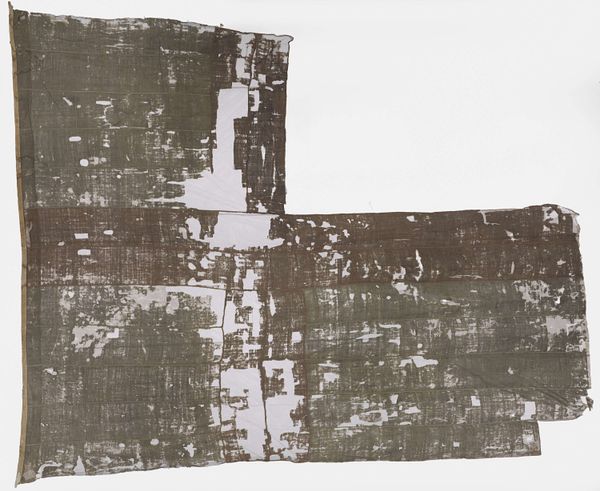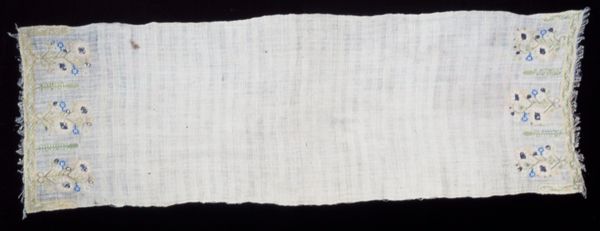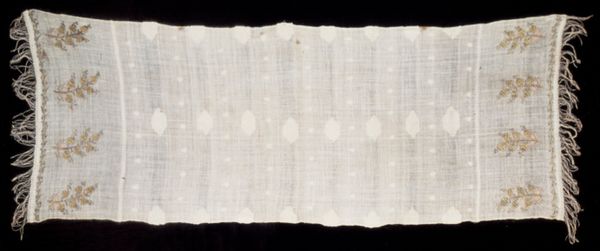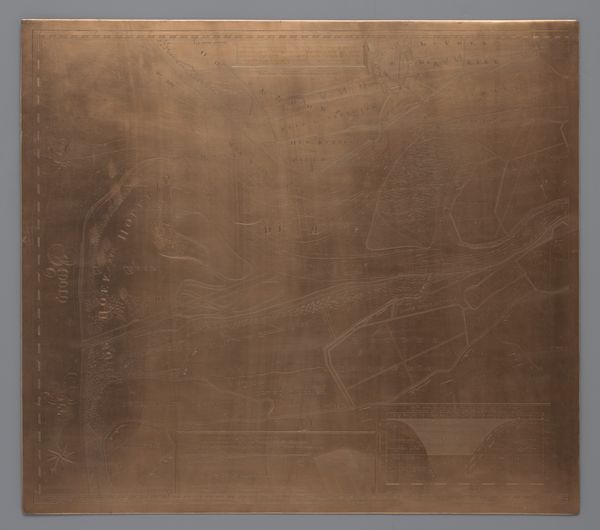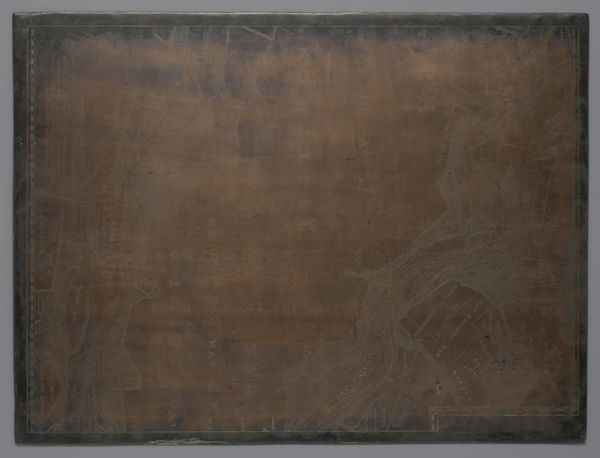
textile, photography
#
textile
#
photography
#
geometric
Dimensions: width 14.2 cm, thickness 3 cm
Copyright: Rijks Museum: Open Domain
Editor: We are looking at "Metrage lint van effen zwart zijden gaas", a length of plain black silk gauze dating back to about 1900, here at the Rijksmuseum. The way it's photographed, flat against what looks like a neutral background, almost renders it dimensionless. What's your interpretation of it? Curator: I see this textile not just as a material object, but as a potent symbol, laden with social and historical significance. Its monochrome black and delicate gauze speak volumes about mourning rituals in the late 19th century. How might the widespread use of black gauze be intertwined with gendered expectations placed on women in mourning, particularly within a patriarchal society? Editor: That's fascinating! I hadn’t considered the performative aspect of mourning tied to gender. Curator: Indeed! Consider the implications of silk – a luxury good, now rendered somber. How does the choice of material, transitioning from luxury to mourning attire, reflect shifting societal values around grief, status, and performative displays of emotion? And let's also ponder its uniformity, presented as a ‘meter length’–suggesting mass production during early industrialization. How did industrial processes impact modes of mourning, creating accessibility while simultaneously perhaps commodifying the grief experience? Editor: The industrial context adds a new layer to understanding mourning. So, mass production made grief almost... democratized, in a way? Curator: Precisely. Also, this democratization carries profound social implications when viewed through the lens of race. For whom was this mourning ritual truly accessible? Did the material realities of working-class communities, particularly those of color, afford the same opportunities for performative grief? Thinking critically about this textile prompts further interrogation of privilege and performativity, encouraging us to analyze how historical grief rituals were stratified along axes of race, class, and gender. Editor: That reframes everything. I see the piece so differently now. Curator: Precisely! Approaching art in an intersectional and historical way deepens our perspective. Editor: Absolutely. I am going to keep that in mind when approaching artworks from now on.
Comments
No comments
Be the first to comment and join the conversation on the ultimate creative platform.
